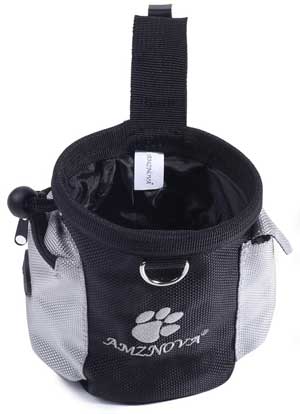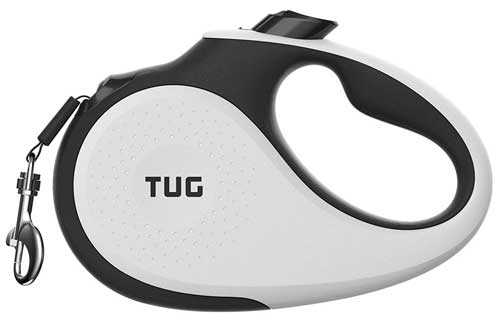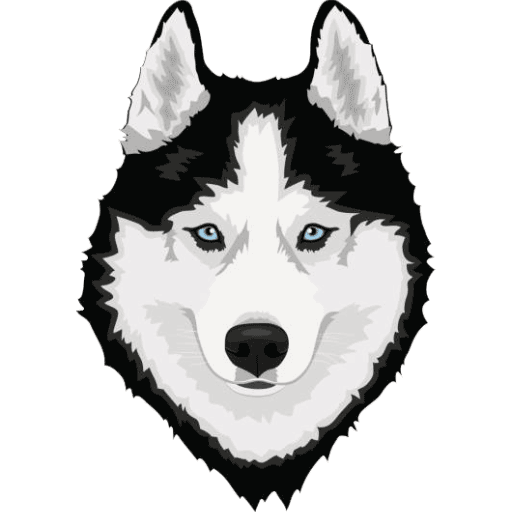Training your Husky to stay is one of the most important commands to work on.
In this guide, let’s look at how to train your Husky to stay and reinforce the command so your Husky will stay in any situation without fail.
It’s well-known that Huskies can be difficult to train, so we’ll also look at what makes a command stick and how to gradually reinforce it.
Find out how to overcome the difficulty in training Huskies in this guide.
What You Need to Know about Teaching ‘Stay’
There can be a big difference in how different dog owners teach their dogs to stay.
Some dogs will stay for no longer than 30 seconds before getting up. That’s not good enough.
You want your Husky to continue to stay in place until you give the release command – no matter what!
Developing a solid stay command takes time and effort, but it will give you a lot of control over your Husky in important situations.
Here are some things to keep in mind when training your Husky to stay:
The Command Needs to Work Everywhere
Some people teach their Husky to stay while at home, then when it seems like it’s working, they stop the training and call it a success.
The problem is that having your Husky obey a command at home is very different from giving the same command at a crowded place, at the park, or when there are a lot of distractions.
It is crucial that your stay command works anywhere in any situation. This is called Generalization and is an important training principle to understand.
To train generalization, you need to train in a variety of environments and introduce distractions to the training sessions. This is called proofing and is explained in this guide.
Proofing takes more time and effort, but it is essential if you want to develop a solid stay command that works anywhere.
Master the Sit Command Before Training to Stay
Before you can get your Husky to stay on command, you need to be able to get your Husky to sit.
That might seem obvious, but it’s important you don’t confuse your Husky by trying to train too many things at once.
If you’re currently training your Husky to sit, avoid training for any other commands until your Husky learns to sit on command.
While advanced trainers will often combine the sit and stay commands (both really mean the same thing), it takes a lot of training experience to pull this off properly.
Three Parts to a Stay Command
There are three parts to training your Husky to stay.
Your goals and focus need to change throughout all three parts if you want to successfully train your Husky to stay.
1. Initial Command
The first part is the initial command to stay. During training, the stay command should only be given when your Husky is sitting and paying attention.
You can combine the verbal command with a hand gesture to reinforce the command and make it clear to your Husky what you have said.
Raising your hand with your palm out is a good hand gesture to use as part of your stay command.
2. Waiting
The second part is what happens after the stay command. This is the time when you want your Husky to remain in position until the release command.
This is the part where most Husky owners get stuck.
While training, you need to pay attention to how long you’re waiting and whether there are any distractions.
The goal here is to teach your Husky to remain in position until they hear the release command.
A common mistake I see is for the owner to constantly repeat the command. Saying “stay…. stay…. stay…” is a terrible approach to training as it teaches your Husky to only stay when you constantly repeat the command.
You need to say the command once and only once.
3. Release
A solid stay command is always accompanied by a release command.
You want to train your Husky to only move after you give a release command.
Being consistent with a release command is how you train your Husky to stay.
The biggest mistake I see is for owners to not use the release command properly. Even if your Husky stays for 3 minutes, if they get up before the release command, it is a fail.
Each of the three parts to the stay command is crucial to get right. You want your Husky to clearly understand the initial command, then know not to move until the release command.
Tips to Improve Your Stay Command Training
Before we walk through the step-by-step training strategy, here are some important tips to keep in mind during your training sessions.
Use Hand Gestures
Combining your vocal commands with hand gestures and body language can speed up the training process and develop a stronger command.
Non-verbal cues such as hand gestures or your body language help give your Husky more information about what you want them to do.
With every command you teach your Husky, consider pairing it with a hand gesture.
Don’t Repeat the Command Over and Over
This is a common trap new dog owners fall into and can quickly derail your training efforts.
In the beginning, a Husky puppy has a short attention span and initially won’t understand any commands.
The first time you try and teach stay, it will feel like your Husky is ignoring you or didn’t hear what you said.
You might have the temptation to say “stay” again to reinforce the command. Don’t.
Repeating a command doesn’t reinforce it. Repeating a command trains your Husky to expect to hear the command multiple times before they obey it.
In other words, by repeating a command over and over, you’re training your Husky to ignore you the first time you say it!
If your Husky doesn’t listen after the first time you say stay, start the process again at step one (covered later). Never repeat yourself.
Be Consistent
It takes time and consistent effort to build up a new habit. It’s why people who join a gym in the New Year often give up by the end of January.
So don’t expect your Husky to master the stay command in one or two training sessions.
The key to successfully teaching your Husky a new command is to regularly run training sessions.
Spend some time every day working on the stay command and continue training after you think your Husky has learned the command.
Every time you add another training session, you will reinforce the command. Don’t stop when your Husky learns to stay – continue training to make sure your Husky will stay every time.
Keep Training Sessions Short
The training uses up a lot of concentration and your Husky can wear out quickly.
The last thing you want to happen is for your Husky to become tired and start ignoring you because they can’t focus.
Keep training sessions short and only train your Husky when they are alert.
Keep Your Cool
Training a Husky can be incredibly frustrating at times. There will be times when your Husky just doesn’t want to focus and just wants to play.
Your attitude and focus during a training session are just as important as your Husky’s focus.
Don’t let yourself get frustrated and take it out on your Husky.
The most common way people let their frustration out is when they start telling off their Husky for not listening.
If you catch yourself saying “no” to your Husky when they don’t listen, take a break and try again later. Don’t let yourself get frustrated.
Use Positive Reinforcement
You want to reinforce any steps towards a successful command. That means praising and rewarding your Husky when they make any progress.
Professional dog trainers know that positive reinforcement is the best approach to training any dog.
Use Food as a Training Tool
Food is a powerful training tool and can make a massive difference in the effectiveness of a training session.
Food works well because it gives your Husky a quick reward without slowing the training down.
Make sure the treats you use are small enough that your Husky can eat them in a fraction of a second.
If your Husky needs to stop and chew the treat, that’s a distraction from training and slows the session down.
I highly recommend using a treat bag like this one (link to Amazon) as it frees up your hands during training.

It also serves as a preparation tool for your Husky. When they see you put on the treat bag, they know it’s time to focus.
Everybody Uses the Same Commands
When training your Husky to stay, it is important that your other family members use the exact same commands, hand gestures, and release commands.
Everybody needs to be on the same page to make it easier for your Husky to understand what they need to do.
Make sure the rest of your family follow the same tips and advice covered in this guide so they don’t accidentally confuse your Husky.
How to Train Your Husky to Stay (Step by Step)
Now that you understand the basics of the three parts to a successful stay command, let’s walk through the training strategy.
Step 1: Set Up Proper Conditions
Consistency is crucial when training your Husky to stay. This means you need to start with the right conditions.
Before you give the stay command, you want your Husky to be in a sitting position and paying attention.
If your Husky is distracted by something, don’t give the stay command. Make sure your Husky is focused on your before you move to the next step.
Step 2: Give the Stay Command
Once the proper conditions are set up (your Husky is sitting and focused on you), give the stay command.
If you want to combine a hand gesture with the vocal command, do it once.
Don’t repeat the command or draw it out (eg: staaaaay). Say it normally like you will in the future.
Try to give the command when your Husky is looking at you for the best results.
Step 3: Wait
The goal of the stay command is for your Husky to remain in position until you give the release command.
The tricky part of training your Husky to stay is teaching them to wait for you.
In the beginning, only wait for a second or two before giving the release command. Make it easy for your Husky to succeed.
Every time your Husky successfully stays, gradually increase the wait time.
This may take days before you start seeing decent improvements, but don’t give up.
Once your Husky can stay for 10+ seconds without moving, you can try moving away during the waiting period to teach your Husky to continue to stay even if you’re walking away.
The end goal is for your Husky to stay no-matter-what. You should be able to walk inside and close the door behind you and your Husky continues to stay in position.
This can only happen if you gradually extend the wait time over a lot of training sessions.
Step 4: Give the Release Command
The release command is how your Husky will know when they can get up.
If you don’t give a release command, your Husky will not learn to stay properly.
You can say “okay”, “release”, “break” or something similar.
The key part of the release command is that you want to see that your Husky has understood that this command means to stop staying.
Your Husky should not continue to sit after the release command. Train them to get up and come over to you on the release command so it reinforces that the stay command has ended.
In the beginning, give the release command almost immediately after the stay command.
Your Husky will probably get up almost immediately anyway, so saying the release command before you think your Husky will get up will help them understand what the word means.
Step 5: Reward
If your Husky didn’t get up until after the release command, reward them.
Give them a food reward after each successful stay and release. You can combine this with a clicker to speed up the training process
Any time your Husky shows any sign of progress, reward them.
If your Husky gets up before the release command, then that’s a fail – even if they were sitting for a long time. It’s only a successful stay if they remain sitting until after the release command.
Be consistent with how you reward your Husky to avoid any confusion.
Advanced Stay Training
Once you can get your Husky to stay and release on command, continue training to create a rock-solid stay command.
The reason many owners have poor control over their Huskies is that they stop training too early.
Here are some advanced training tips to help develop a strong stay command.
Increase Distance
Once your Husky has learned the basics of sit, stay, and release, you can gradually introduce distance to the training.
Gradually increase the distance you walk while your Husky stays. Once you feel confident you can walk away without your Husky breaking position, use barriers to ramp up the difficulty.
Walk behind something or move out of view so your Husky can’t see you. The first few times you do this, give the release command immediately. Then gradually increase the duration while you’re out-of-view.
The goal is to be able to expect your Husky to remain in position no matter whether they can see you or not.
Train With Distractions
Start off training your Husky at home when there are no distractions. Be alone with your Husky so your Husky remains focused on you.
Once your Husky can stay on command, gradually introduce distractions into the training.
Having another person nearby is a good starting point. Keep the person silent, but have them walk around.
Once your Husky learns to keep the focus on you, have the person talk to themselves and walk around and behind your Husky. Keep increasing the distractions when your Husky remains focused on you.
You can also use toys to distract your Husky. Throw a toy nearby while your Husky is staying. Reward your Husky for not breaking the stay.
Train in Different Locations
An important lesson a lot of dog owners don’t understand is that training is situation dependent.
This means training a command at home isn’t enough. If you only train your Husky to stay while at home, don’t expect them to stay while in public or in unfamiliar places.
Start with training your Husky at home, then gradually train your Husky in different locations and scenarios.
Use a long retractable leash like this one to keep your Husky under control while still being able to teach them to stay with distance.

Train your Husky in quiet public places as well as distracting places with other people and other dogs.
The goal is for your Husky to understand that it doesn’t matter where or when you give the stay command, they must obey it every time.

